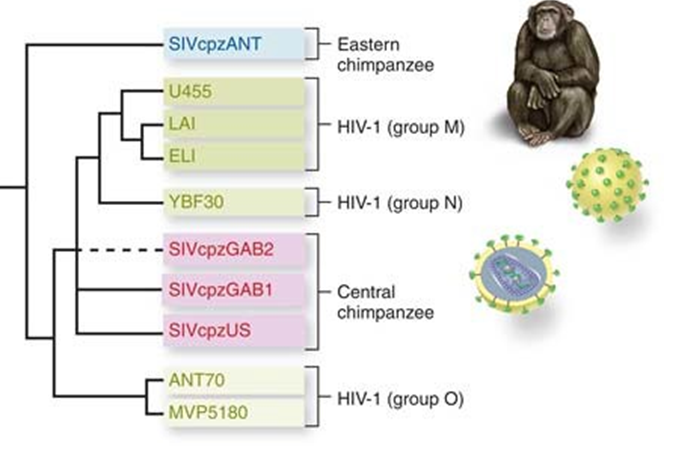Zoos often loan animals to other zoos for breeding purposes. From an evolutionary standpoint, what is the benefit?
A) It increases the genetic diversity of the zoo's population.
B) It creates a bottleneck effect.
C) New animals increase zoo revenues.
D) It increases the effects of natural selection on the population.
E) It increases the rate of random mutations.
A
You might also like to view...
The mitochondrial DNA can be used to identify a species based upon
A) NADH dehydrogenase sequences. B) variation in the mitochondrial ribosomes. C) 648 bp DNA bar code region. D) leucine codon usage. E) none of the above
Based on the figure, which of the following statements is most likely accurate?

A. HIV arose more than once.
B. HIV and SIV are not genetically related.
C. The SIV strains will all have more sequence similarity with each other than with any of the HIV groups.
D. SIV only arose once.
E. HIV groups M, N, and O will be more similar to each other than to SIV.
The two basic types of biogeochemical cycles are gaseous and ________
Fill in the blank(s) with correct word
Both catabolic and anabolic reactions are regulated by hormones. When the endocrine system detects a change in the concentration of nutrients, such as glucose levels dropping below normal, hormones are released to activate or deactivate the enzymes in the metabolic pathways. Which of the following statements is correct regarding the hormonal control of catabolism during the absorptive state?
a. Cortisol from the adrenal glands strimulates protein synthesis, gluconeogenesis, and lipolysis b. Epinephrine from the adrenal glands stimulates glycogen synthesis and protein degradation, but it has little to no effect on lipid metabolism c. Glucagon from the pancreas stimulates protein degradation, glycogenolysis, and lipolysis when blood glucose levels are low d. Insulin released from the pancreas stimulates glycogenolysis and lipolysis, but has little effect on protein metabolism